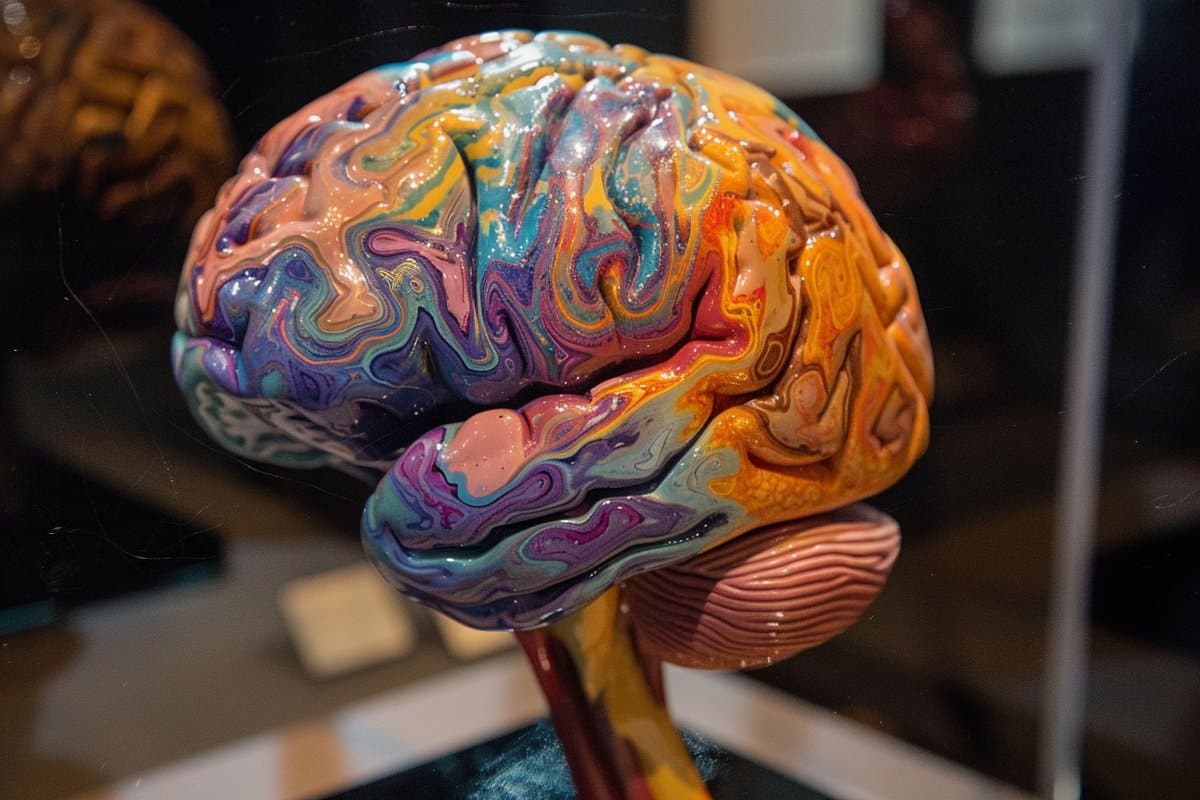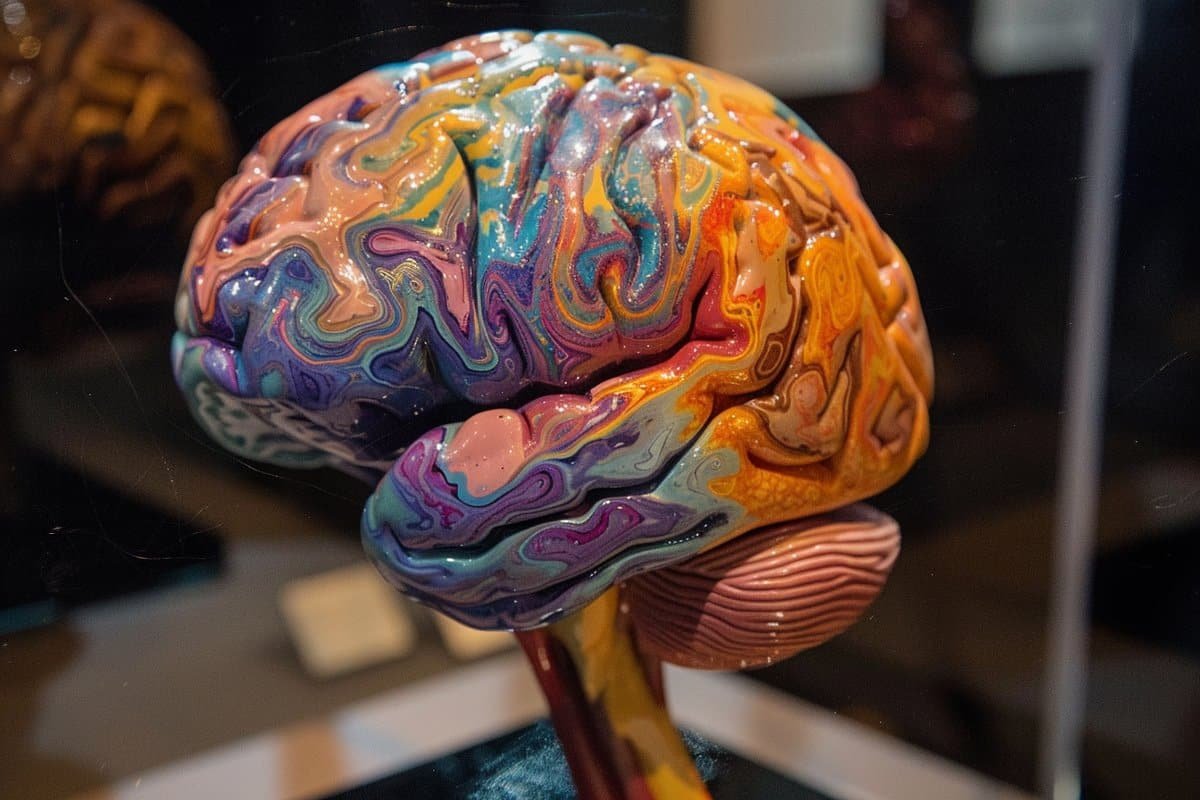Resume: Deep brain stimulation (DBS) in the subthalamic nucleus, a treatment for Parkinson’s disease, may affect more than just motor control. This treatment, which alleviates Parkinson’s symptoms such as tremors, also appears to affect patients’ ability to shift their attention between tasks.
The study conducted experiments with Parkinson’s patients, examining how their attention shifted when the DBS device was active or inactive. Findings show that while DBS supports motor function, it may hinder the brain’s ability to focus thoughts and attention, which may explain why some patients experience cognitive and behavioral side effects.
Key Facts:
- Deep brain stimulation in the subthalamic nucleus is effective for managing Parkinson’s symptoms, but may also affect cognitive functions related to attention and impulse control.
- The study used auditory distractions to measure shifts in attention in Parkinson’s patients, finding that people with active DBS had difficulty shifting their focus.
- This research suggests that the subthalamic nucleus plays a crucial role in both motor and non-motor systems, including thought and attention management.
Source: University of Iowa
In a new study, researchers from the University of Iowa have linked a region of the brain to the way people redirect thoughts and attention when distracted. The connection is important because it provides insight into cognitive and behavioral side effects of a technique used to treat patients with Parkinson’s disease.
The subthalamic nucleus is a pea-sized brain area involved in the motor control system, that is, our movements. In people with Parkinson’s disease, these movements are affected: researchers believe that the subthalamic nucleus, which normally acts as a brake during sudden movements, exerts too much influence. That overactive brake, researchers think, is what contributes to the tremors and other motor deficits associated with the disease.

In recent years, doctors have treated Parkinson’s patients with deep brain stimulation, an electrode implanted in the subthalamic nucleus that rhythmically generates electrical signals, reducing the brain region’s inhibitions and freeing up movement. The deep brain stimulation system is like a pacemaker for the heart; once implanted, it works continuously.
“Frankly, the technique is really miraculous,” said Jan Wessel, associate professor in the Departments of Psychological and Brain Sciences and Neurology at Iowa.
“People come in with Parkinson’s disease, surgeons turn on the electrode and their tremors disappear. Suddenly they can keep their hands still and play golf. It’s one of those successful treatments where, when you see it in action, you really start to believe in what the neuroscience community is doing.”
Yet some patients treated with deep brain stimulation are plagued by an inability to focus attention and impulsive thoughts, sometimes leading to risky behaviors such as gambling and substance use. Researchers began to wonder: did the subthalamic nucleus’s role in movement also mean that this same brain region might be involved with thoughts and impulse control?
Wessel decided to find out. His team designed an experiment that measured the focus of attention of more than a dozen Parkinson’s patients when the deep brain stimulation treatment was activated or inactive.
The participants, fitted with a skull cap to monitor their brain waves, were instructed to focus their attention on a computer screen while brain waves in their visual cortex were monitored.
About one in five times, in random order, participants heard a chirping sound, intended to divert their visual attention from the screen to the newly introduced auditory distraction.
In a 2021 study, Wessel’s group found that brain waves in participants’ visual cortex decreased when they heard a beep, meaning their attention was distracted by the sound.
By exchanging moments when sound and no sound sounded, the researchers were able to see when attention was distracted and when the focus of visual attention was maintained.
For this study, the team turned their attention to the Parkinson’s groups. When the deep brain stimulation was inactive and the beeping sound sounded, the Parkinson’s patients shifted their attention from the visual to the auditory system – just as the control group had done in the previous study.
But when the beeping sound was introduced to the Parkinson’s participants while the deep brain stimulation was activated, those participants did not divert their visual attention.
“We found that they can no longer disconnect or suppress their attention in the same way,” said Wessel, the study’s corresponding author.
“The unexpected sound happens and they are still fully engaged with their visual system. They have not diverted their attention from the visual.”
The distinction confirmed the role of the subthalamic nucleus in the way the brain and body communicate not only with movement – as previously known – but also with thoughts and attention.
“Until now, it was very unclear why people with Parkinson’s disease had problems with their thoughts, for example why they performed worse on attention tests,” says Wessel.
“Our study explains why: While removing the inhibitory influence of the subthalamic nucleus on the motor system is helpful in treating Parkinson’s, removing the inhibitory influence of non-motor systems (such as thought or attention) may have adverse effects .”
Wessel strongly believes that deep brain stimulation should continue to be used in Parkinson’s patients, citing its clear benefits in supporting motor control functions.
“There may be different parts of the subthalamic nucleus that are shutting down the motor system and the attention system,” he says.
“That’s why we’re doing the basic research, to figure out how we can fine-tune it to get the full benefit to the motor system without causing any potential side effects.”
The study, “The human subthalamic nucleus temporarily inhibits active attention processes,” was published online March 4 in the journal Brain.
The first author is Cheol Soh, from the Department of Psychological and Brain Sciences at Iowa. Contributing authors, all from Iowa, include Mario Hervault, Nathan H. Chalkley, and Cathleen M. Moore, of the Department of Psychological and Brain Sciences; Jeremy Greenlee and Andrea Rohl, from the Department of Neurosurgery; and Qiang Zhang and Ergun Uc, from the Department of Neurology.
Financing: The National Institutes of Health and the National Science Foundation funded the research through a CAREER award to Wessel.
About this neuroscience research news
Author: Richard Lewis
Source: University of Iowa
Contact: Richard Lewis – University of Iowa
Image: The image is credited to Neuroscience News
Original research: Closed access.
“The human subthalamic nucleus temporarily inhibits active attentional processes” by Jan Wessel et al. Brain
Abstract
The human subthalamic nucleus temporarily inhibits active attention processes
The subthalamic nucleus (STN) of the basal ganglia is key to the inhibitory control of movement. Consequently, it is a primary target for the neurosurgical treatment of movement disorders such as Parkinson’s disease, where modulating the STN via deep brain stimulation (DBS) can release excessive inhibition of thalamo-cortical motor circuits.
However, the STN is also anatomically connected to other thalamo-cortical circuits, including underlying cognitive processes such as attention. STN-DBS in particular can also influence these processes.
This suggests that the STN may also contribute to the inhibition of non-motor activity, and that STN-DBS may induce changes in this inhibition. We tested this hypothesis here in humans.
We used a novel, wireless outpatient method to record intracranial local field potentials (LFP) from STN DBS implants during a visual attention task (Experiment 1, N = 12). These outpatient measurements allowed for the simultaneous recording of high-density EEG, which we used to derive the steady-state visual evoked potential (SSVEP), a well-established neural index of visual attentional engagement.
By relating STN activity to this neural marker of attention (rather than overt behavior), we avoided potential confounds due to the motor role of STN. Our goal was to test whether the STN contributes to the transient inhibition of the SSVEP caused by unexpected, distracting sounds.
Furthermore, we causally tested this association in a second experiment, modulating STN via DBS over two sessions of the task, at least a week apart (N = 21, no sample overlap with Experiment 1).
The LFP recordings in Experiment 1 showed that reductions in SSVEP following disturbing sounds were preceded by sound-related γ-frequency (>60 Hz) activity in the STN. Trial-to-trial modeling further showed that this STN activity statistically mediated the suppressive effect of the sounds on the SSVEP.
In Experiment 2, modulating STN activity via DBS significantly reduced these noise-related SSVEP reductions. This provides causal evidence for the role of the STN in the surprise-related inhibition of attention.
These findings suggest that the human STN contributes to the inhibition of attention, a non-motor process. This supports a domain-general view of the inhibitory role of the STN.
Furthermore, these findings also suggest a possible mechanism underlying some of the known cognitive side effects of STN-DBS treatment, especially on attentional processes.
Finally, our newly developed outpatient LFP recording technique facilitates testing the role of subcortical nuclei in complex cognitive tasks, in addition to recordings from the rest of the brain, and in a much shorter time than perisurgical recordings.

